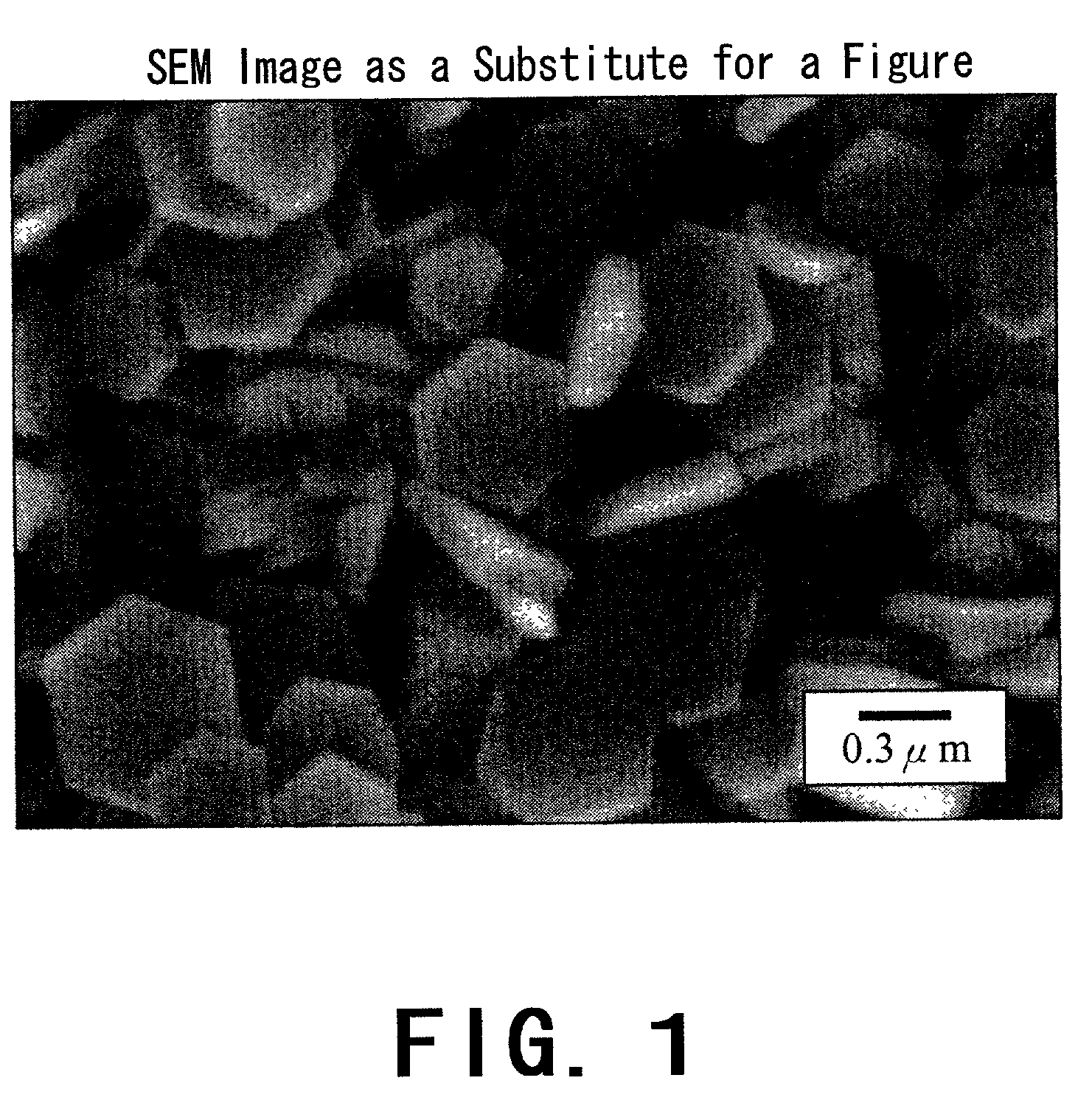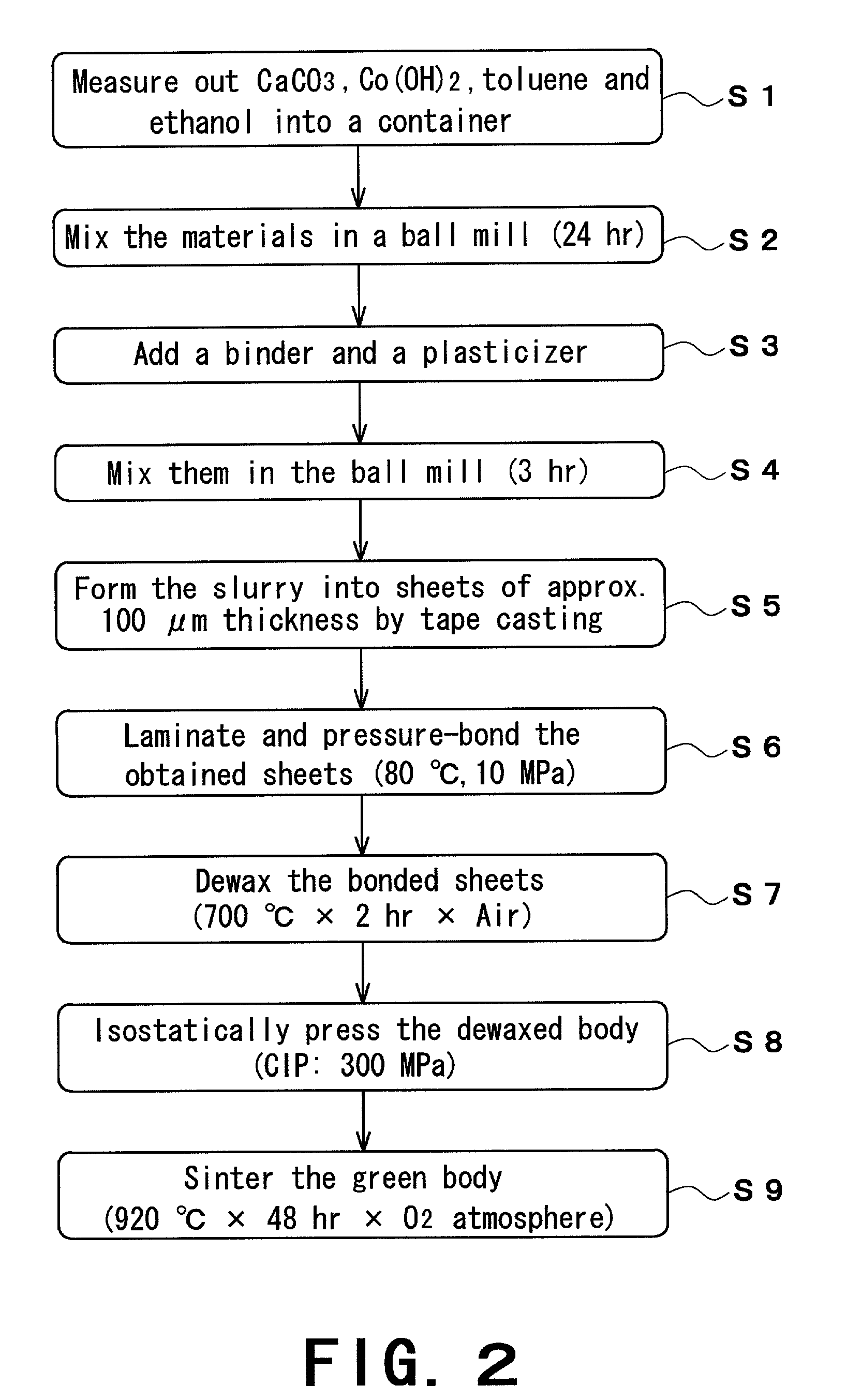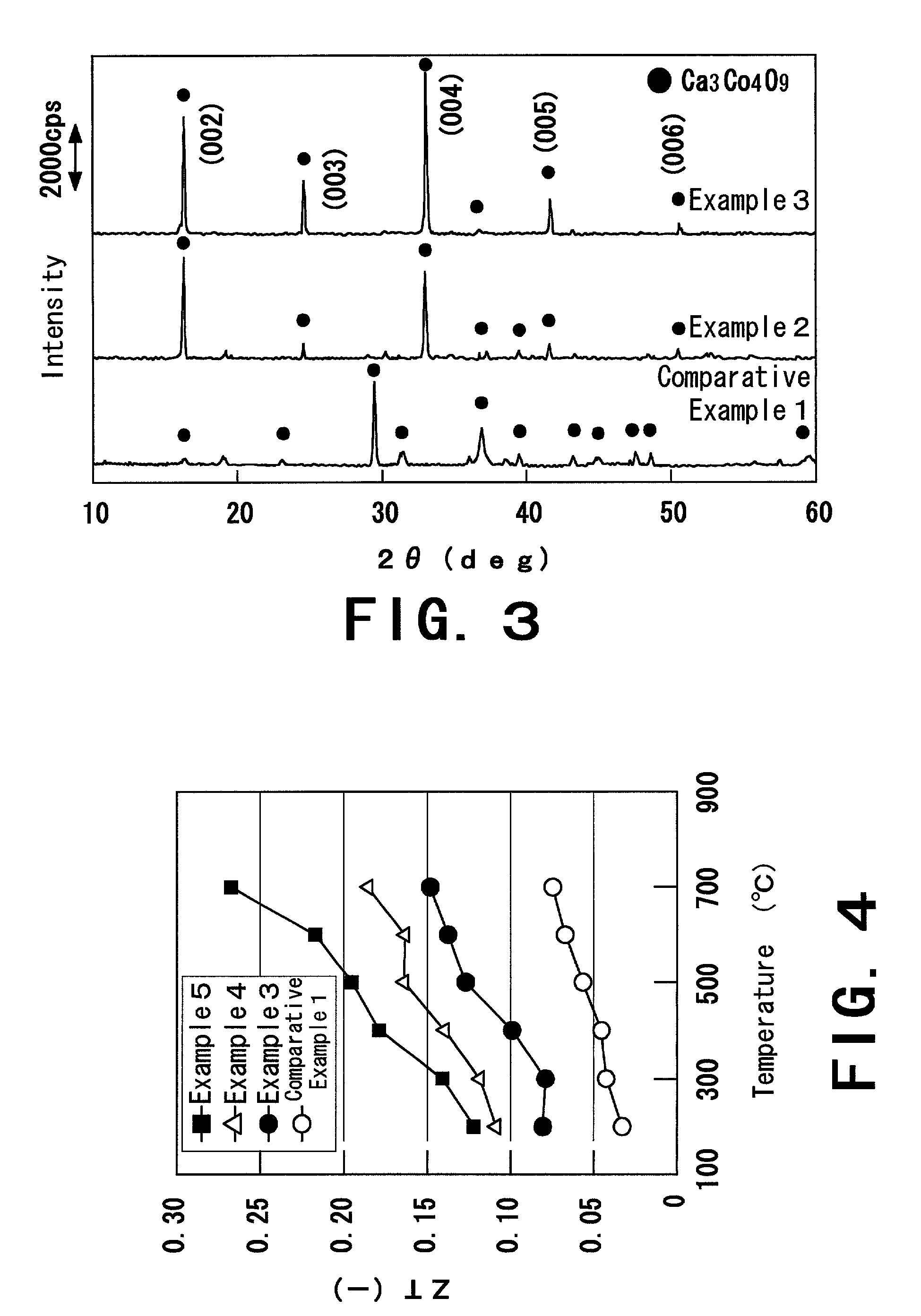Grain oriented ceramics and a production process thereof, a platelike powder for producing the grain oriented ceramics, and a thermoelectric conversion element
a technology of thermoelectric conversion element and grain oriented ceramics, which is applied in the direction of rare earth metal compounds, inorganic chemistry, conductive materials, etc., can solve the problems of deteriorating the performance of thermoelectric elements, expensive rare elements (such as te, sb or se), and difficult use of compound semiconductors in high-temperature ranges
- Summary
- Abstract
- Description
- Claims
- Application Information
AI Technical Summary
Benefits of technology
Problems solved by technology
Method used
Image
Examples
example 2
(Example 2)
[0144] Grain oriented ceramics composed of Ca.sub.3Co.sub.4O.sub.9 were prepared through the steps shown in FIG. 2. First, in Step 1 (hereinafter abbreviated simply as "Si"), predetermined amounts of a CaCO.sub.3 powder (average grain size: 0.2 .mu.m), the Co(OH).sub.2 platelike powder synthesized in Example 1, toluene and anhydrous ethanol were measured out into a container. Subsequently, these materials were put into a ball mill and wet-mixed for 24 hours (S2). After completion of the mixing, predetermined amounts of a binder and a plasticizer were added to the slurry (S3), and they were wet-mixed in the ball mill for another three hours (S4). Table 1 shows the amounts of those materials to be charged for the mixing.
1 TABLE 1 Charging Amount CaCo.sub.3 21.00 g Co(OH).sub.2.sup.1) 26.04 g Toluene 60 ml Anhydrous Ethanol 40 ml Binder.sup.2) 4 g Plasticizer.sup.3) 4 g .sup.1)platelike crystal (grain size: 0.5 .mu.m) .sup.2)polyvinyl butyral .sup.3)butyl phthalate
[0145] Nex...
example 3
(Example 3)
[0147] First, the same steps as in Example 2 (Si to S7 in FIG. 2) were performed to prepare a green body in which a Co(OH).sub.2 platelike powder was plane-oriented, and the green body was then dewaxed. Next, the dewaxed body was put in a furnace without being subjected to cold isostatic pressing, and it was hot-pressed in oxygen. The pressure sintering was conducted under the conditions at a pressure of 2 MPa, at a heating temperature of 920 .degree. C. and for 48 hours. In addition, the pressure was applied in a direction perpendicular to a tape plane.
example 4
(Example 4)
[0148] Grain oriented ceramics composed of {Ca.sub.0.95Na.sub.0.05}.sub.3C-o.sub.4O.sub.9 was prepared through the same steps as in Example 3, except that a CaCO.sub.3 powder and a Na.sub.2CO.sub.3 powder (average grain size: 0.2.mu.m) were used as the second powders and that they were mixed such that Na would substitute for 5 atm% of Ca.
PUM
| Property | Measurement | Unit |
|---|---|---|
| average aspect ratio | aaaaa | aaaaa |
| grain size | aaaaa | aaaaa |
| Seebeck coefficient | aaaaa | aaaaa |
Abstract
Description
Claims
Application Information
 Login to View More
Login to View More - R&D
- Intellectual Property
- Life Sciences
- Materials
- Tech Scout
- Unparalleled Data Quality
- Higher Quality Content
- 60% Fewer Hallucinations
Browse by: Latest US Patents, China's latest patents, Technical Efficacy Thesaurus, Application Domain, Technology Topic, Popular Technical Reports.
© 2025 PatSnap. All rights reserved.Legal|Privacy policy|Modern Slavery Act Transparency Statement|Sitemap|About US| Contact US: help@patsnap.com



